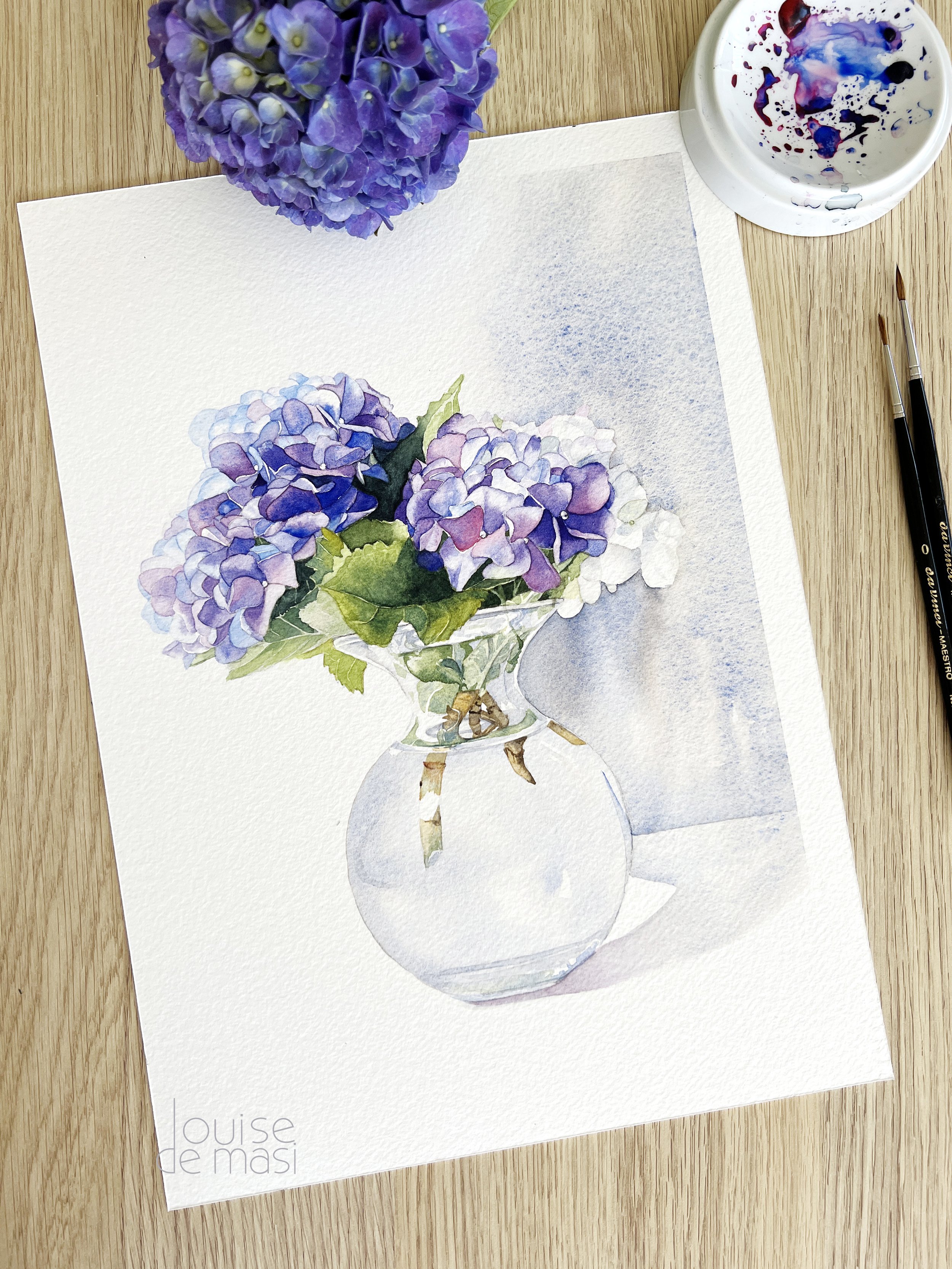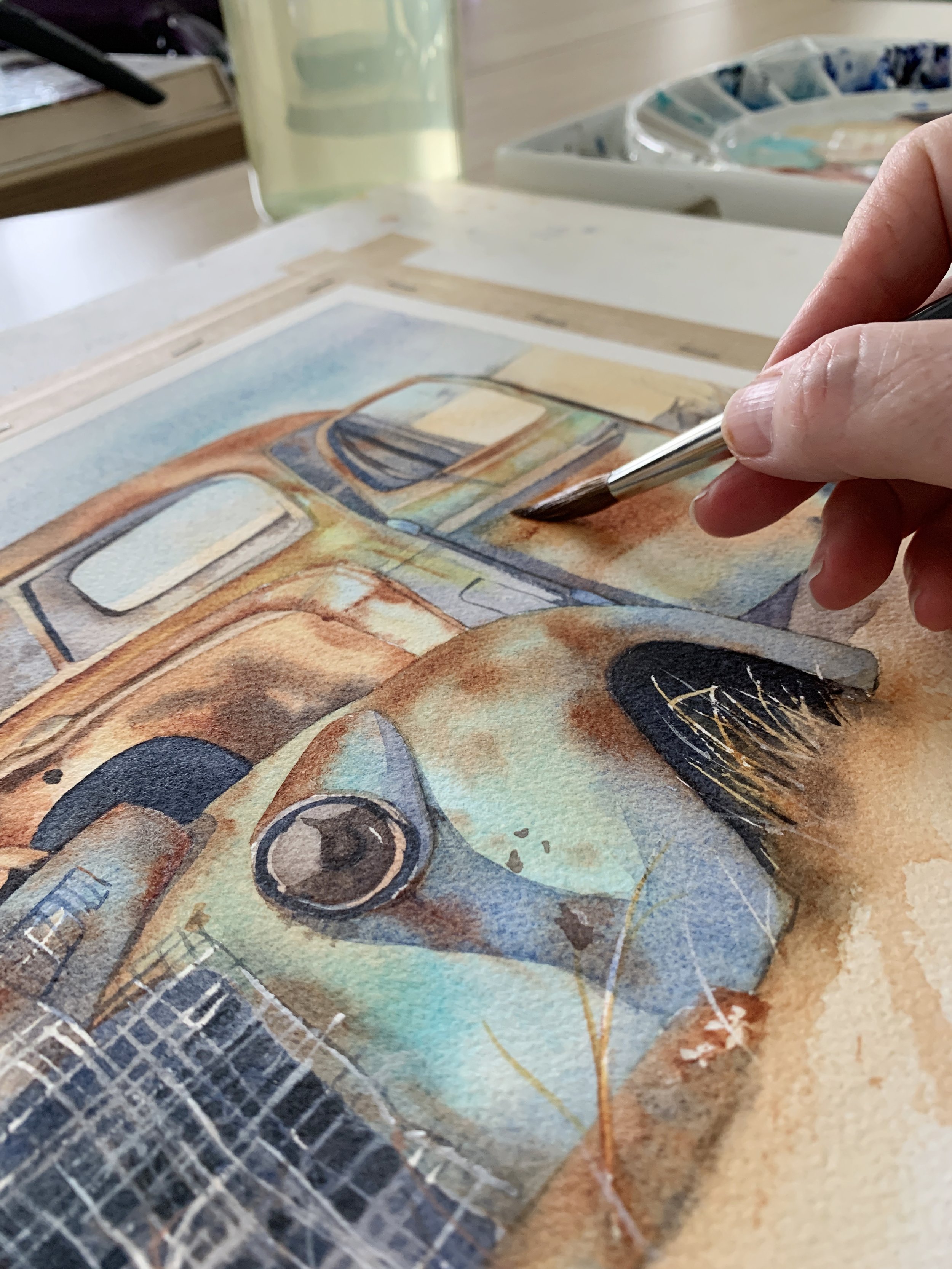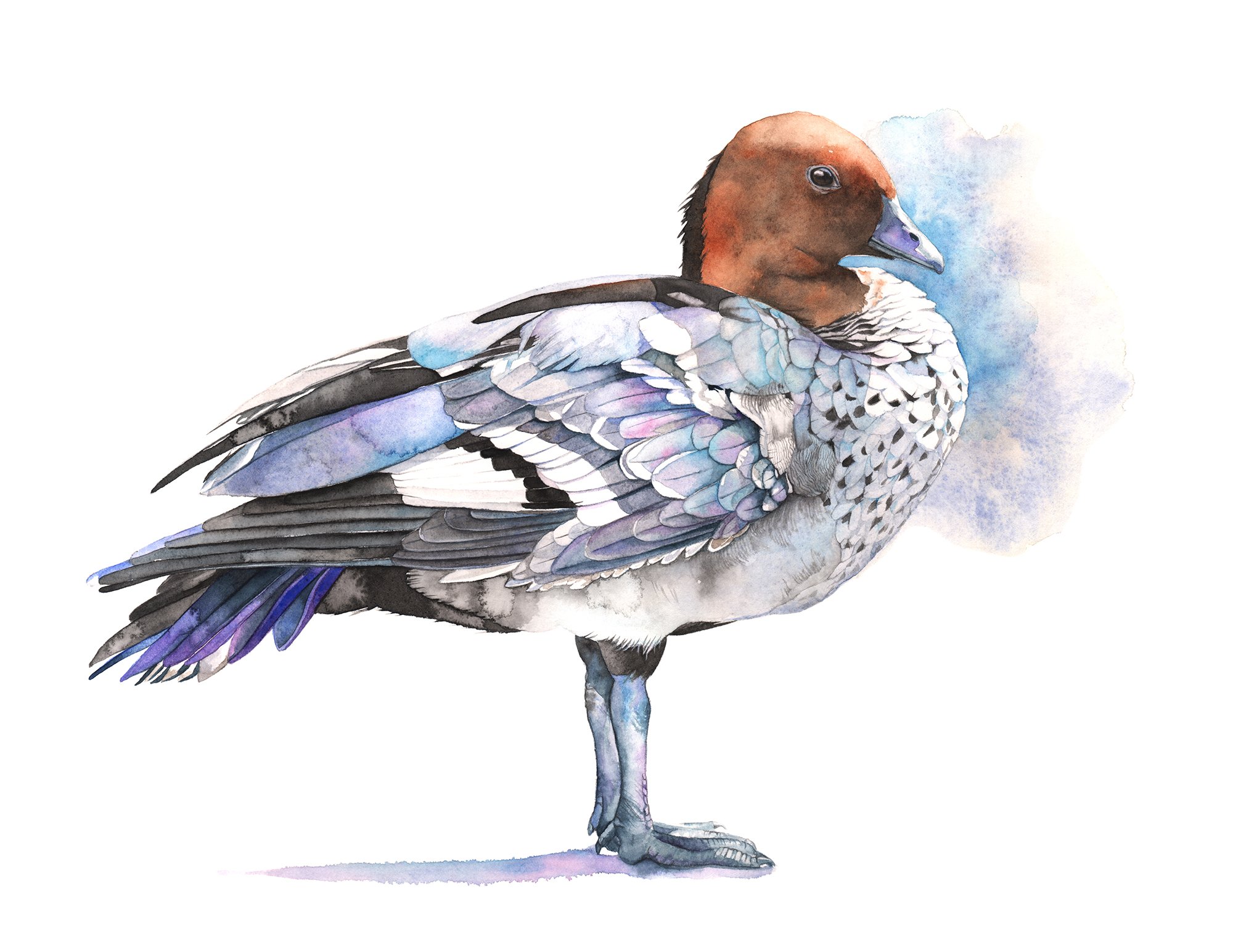There’s something so beautiful about the hydrangea flower - the full, delicate blooms, the shifting colours, and the way they fill a space with softness. I have a few hydrangea bushes growing in my garden, and when they’re in bloom, I always feel inspired to bring them indoors and start painting. This watercolour hydrangea piece came together after I popped a few freshly cut stems into a glass vase and decided it was the perfect moment for painting flowers.
Read MoreI’ve learned the hard way that Louise’s first layers always look way darker in the video than they actually are. Determined to remember this, I mix a watery paint.
I’ve also learned that if your paper is too wet and your paint is too watery, the pigment will migrate to the edges, leaving behind an unwanted harsh line. So, keeping all this in mind, I put paint on the paper—only to immediately want to quit.
Read MoreI always begin my floral paintings with a wet-on-wet technique for the initial wash, embracing the unpredictability and softness it brings. This stage is about capturing the ephemeral qualities of petals- their delicacy and the gentle interplay of light and shadow. I wet the paper first, allowing the paint to flow freely, blending seamlessly into the damp surface. Sometimes, I paint each petal individually, while other times I apply a wash over the entire flower at once. It depends on the flower and the level of colour or value variation within each petal.
Read MoreAquabord is a unique painting surface created by Ampersand Art Supply, designed specifically for watercolour and other water-based media. Aquabord is available in various options, including flat panels and cradle profiles. The texture of Aquabord is similar to cold-pressed watercolour paper, allowing colours to retain their purity and vibrancy. Unlike traditional watercolour paper, Aquabord is made from a rigid, absorbent clay surface that is applied to a hardboard panel.
Read MoreWorking as a full-time artist leaves me with hardly any time for other activities, which is why my rose garden has become a jungle of weeds 😬. The few roses that survive are struggling to find space to breathe among all the overgrowth. Despite this, my 'Heaven Scent' rose miraculously managed to produce this little gem.
I cut it free from the weeds that were smothering it and left it in a vase to open slightly before I painted it.
Read MoreUnderstanding the amount of water on your brush and its interplay with the paper is vital. Watercolour techniques like dry-on-dry, wet-on-dry, wet-on-wet, and dry-on-wet are not just techniques; they are the essence of watercolour painting. Each watercolour method allows for a different expression of water and pigment, and mastering these can elevate your art.
Many beginners may not use enough water on their paper. The brush should glide effortlessly over the paper for most techniques, except for dry brushing. Adjusting the water level in the paint mixture or in your brush, can help achieve the right flow.
Read MoreWhen I paint, I don't want to replicate the photo, I want to create an original piece of art.
There's a lot of information in my reference photo. The background is really busy and the Cockatoo has a lot of feather detail so I recognised the need to simplify to achieve a successful painting.
The photograph created the initial spark for the painting but it is merely a starting point to help convey the essence of the scene.
Read MoreI thought it would make painting the background splash easier if I used masking fluid on the edge of the birds before I started, but after my background splash had dried and I started to remove the masking fluid, I discovered that it had left a yellow stain on my paper all the way around the age of the cockatoos.
It looked awful, and I came really close to ripping the painting off my board and starting again. I should have known better and I always tell all my students to test the masking fluid on the edge of the paper before using it to make sure it doesn't discolour or tear the paper when removing it.
Read MoreThree common water problems happen to me all the time when I paint but fortunately I know how to fix them when they do.
Read More







